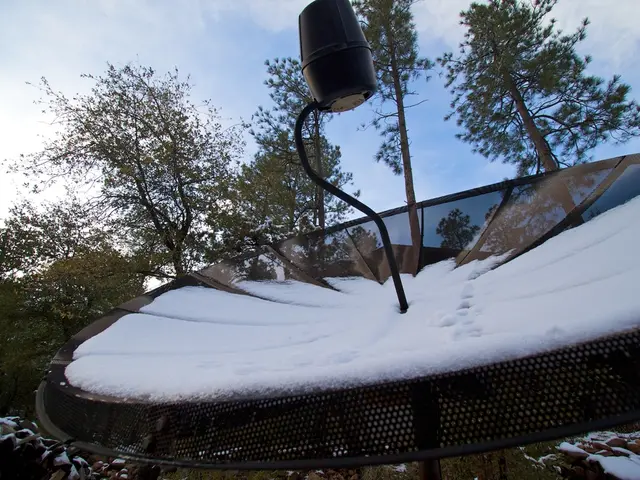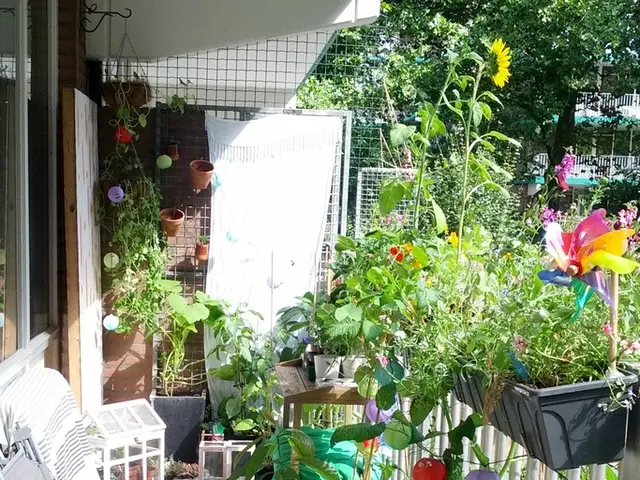Avoid these 19 common pitfalls in creating raised bed gardens this spring:
Raised bed gardening has become increasingly popular, offering a convenient and versatile way to grow a variety of plants. However, to ensure a thriving garden this spring, it's essential to understand some key factors that can impact the success of your raised bed garden.
Firstly, neglecting long-term maintenance can make raised beds harder to manage later. It's crucial to keep on top of weeding, watering, and soil management to maintain a healthy and productive garden.
Secondly, over-fertilizing can burn roots or encourage leafy growth at the expense of fruit. A balanced fertiliser application is key to promoting robust growth and fruit production.
Thirdly, not researching plant pairings can lead to a less productive raised bed, as some plants grow better together, while others compete or attract pests. It's worth spending some time researching suitable plant combinations before starting your garden.
Fourthly, using a soil mix with poor water retention, skipping mulch, or using unshaded materials can cause rapid evaporation in raised beds. To prevent this, opt for a soil mix with good water-holding capacity, use mulch to conserve moisture, and choose materials that provide shade to help retain moisture.
Starting too soon in the season can expose seedlings to frost or cold soil. It's best to wait until the risk of frost has passed before planting.
Not planning for vertical crops can waste potential yield. Utilising vertical space with peas, beans, or cucumbers can help maximise the productivity of your raised bed garden.
Skipping soil testing can result in nutrient deficiencies or pH problems, which can be avoided by using a simple home test kit or sending a sample to your local extension service.
To properly manage spacing in raised bed gardening and prevent overcrowding, poor air circulation, and increased risk of disease, follow these expert guidelines:
- Follow precise spacing recommendations for each crop based on plant size and growth habits. For example, peas are spaced about 8 per square foot, while smaller varieties of radishes and beets can be spaced up to 16 per square foot. - Allow enough room for larger and fast-growing plants like zucchini and squash, which require at least 2 to 3 feet spacing in all directions to enable airflow and healthy growth. - Use vertical supports such as trellises or stakes for climbing plants like beans or vining squash to maximise space and improve air movement around the plants. - Avoid the temptation to cram seedlings too closely, even early in growth stages—adequate spacing from the start prevents overcrowding as plants mature. - Maintain proper soil conditions and watering practices—well-draining soil rich in organic matter reduces excess moisture around roots, minimising the risk of root rot and diseases. - Regularly prune or thin plants if necessary to enhance airflow between leaves and stems.
By adhering to plant-specific spacing guidelines and designing your raised beds with sufficient room for each plant’s mature size, you ensure good air circulation, reduce humidity buildup, and minimise disease risk while promoting vigorous growth and productivity. This approach balances maximising space use with maintaining healthy growing conditions.
By following these tips, you're well on your way to enjoying a healthier, more productive garden this spring in your raised beds. Happy gardening!
[1] Square Foot Gardening: The Complete Guide to Year-Round Vegetable Production (3rd Edition) by Mel Bartholomew [2] The Vegetable Gardener's Bible: The Complete Guide to Successful Vegetable Gardening by Edward C. Smith [3] The Complete Guide to Square Foot Gardening: The Revolutionary Method for Growing More in Less Space by Mel Bartholomew [4] The Organic Gardener's Handbook of Natural Pest and Disease Control: Prevention and Cures for More Than 150 Common Garden Problems by Fern Marshall Bradley and Gayla Trail
Incorporating soil testing into your lifestyle can help in ensuring a productive home-and-garden, as it helps avoid nutrient deficiencies or pH problems. Proper spacing guidelines for raised bed gardening, as learned from Square Foot Gardening books, is essential for maintaining good air circulation, reducing disease risk, and promoting a thriving garden.








